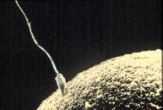Lift Ban on Human Egg Studies, Scientists Plea

Young girls or women who become infertile due to cancer treatments can save their eggs or even a piece of ovary in hopes of having children someday. But federal law blocks government researchers from activating eggs in the lab to understand early egg biology and the factors that lead to healthy human babies.
The activated eggs, known as parthenotes, can begin dividing into more cells without the usual fertilization from a male's sperm. They can never develop into human embryos, because they lack the male's genetic imprint – yet they have been lumped in with embryos under the Dickey-Wicker Amendment's 1996 ban on certain types of federally funded research.
Now researchers have asked for a lifting of the federal research ban on parthenotes. They hope to do work that could lead to a boost in human fertility chances, screening methods for possible miscarriages and answers to cancer questions.
"We want to rigorously test the quality of the eggs in a research environment, so that when it's time for fertility it's not a second experiment," said Teresa Woodruff, founder and director of the Institute for Women's Health Research at Northwestern University Feinberg School of Medicine in Chicago.
Woodruff and several other colleagues issued their call through a policy paper detailed in the Oct. 22 issue of the journal Science.
Private in vitro fertilization (IVF) clinics and researchers can do the same research without the funding restrictions. But IVF clinics don't want to waste eggs by activating them through parthenogenesis, because they're in the business of trying to fertilize and implant the eggs. (And researchers need the funding.)
Lay down the law
Get the world’s most fascinating discoveries delivered straight to your inbox.
The Dickey-Wicker Amendment (DWA) may have confused parthenotes with embryos based upon a sloppy reading of recommendations from a National Institutes of Health Human Embryo Research Panel. That panel treated parthenotes as being separate from embryos.
But the DWA defined a human embryo as "any organism not protected as a human subject" that was "derived by fertilization, parthenogenesis, or any other means from one or more human gametes." The congressional ban has passed each year since 1996.
Much of the controversy surrounding DWA has concerned federal funding of human embryonic stem cell research – a federal judge ruled in August that President Barack Obama's 2009 executive order expanding federal funding of such stem cells violated the DWA.
By contrast, parthenotes have received little public attention and are in danger of being overlooked. Yet they have become collateral damage in the sweeping ban on federal research regarding human embryos, researchers said.
"We don't want [parthenotes] to be a big part of the controversy, but they've been swept along," Woodruff told LiveScience. "I think we're talking about apples and oranges here."
Better eggs for healthy humans
Understanding the early biology and health of eggs could perhaps lead to a boost in IVF clinic successes, said Candace Tingen, director of research programs for the Institute for Women's Health Research at Northwestern and lead author on the paper.
"While the research wouldn't be done on the exact egg used in IVF labs, those eggs would benefit," Tingen said during a phone interview. "We'd use human eggs that aren't being used for IVF to find possible markers of egg health."
Researchers could also probe the mystery of miscarriages among pregnant women, and perhaps identify those cases where an egg has spontaneously activated without fertilization from sperm.
"It's believed that some percent of miscarriages are not due to viable pregnancies or embryos, but parthenotes," Tingen explained. "Better understanding of that could lead to better markers of actual pregnancies, so we don't have so many false positives at the beginning."
Eggs that spontaneously activate in an ovary may even become cancerous, and are responsible for some of the most common gonad tumors in children and young adults. Better understanding of what leads to such acts of parthenogenesis could arise from more lab research.
Keeping fertility on ice
Another method allows for removing and freezing ovarian follicles where eggs develop and mature, and has led to the hope that such eggs could later be fertilized in vitro. That may give the only fertility option for very young cancer patients who undergo treatment at the ages of 2 or 3, or women who have advanced cancer and can't undergo emergency IVF.
But the DWA prevents federally funded researchers from using parthenogenesis to activate the eggs produced by frozen follicles as a way of checking their health.
Such examples have served as the motivation for Tingen and Woodruff in making their public plea for federally funded research on parthenotes. They were joined in writing the paper by Sarah Rodriguez and Lisa Campo-Engelstein, both bioethicists at Northwestern University.
"My hope is that this is not a huge deal," Woodruff said. "As long as we shine a light on it, maybe we can sensibly remove parthenotes from the ban."



